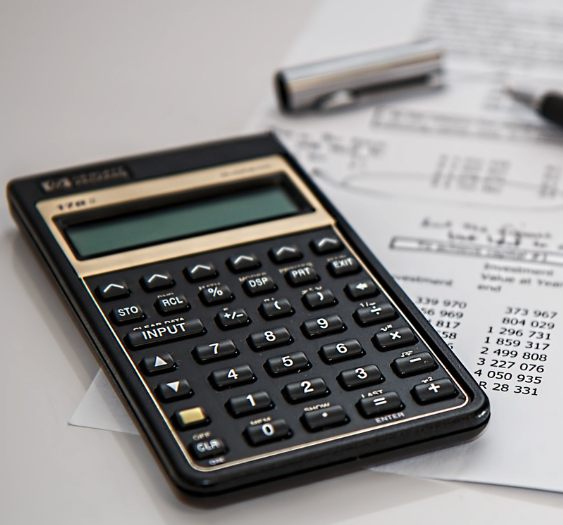Paying taxes is part of life, but that doesn’t mean there aren’t ways to save a little bit of money. If you’re part of the middle class in the UK, you might feel that most tax breaks are designed for the wealthy or large businesses, but there are plenty of opportunities for you to reduce your tax burden too. By taking advantage of the right tax-saving strategies, you can keep more of what you earn, helping to improve your financial situation.
This guide will walk you through some of the best tax-saving strategies for the middle class, and show you how to make the most of what’s available to you. Let’s dive in!
Understanding the Middle-Class Tax Bracket
In the UK, it helps to understand where you fall in the income spectrum, as this can impact the tax-saving strategies available to you. Based on the latest figures from the Office for National Statistics (ONS), the average disposable income for a household in 2023 is around £34,500. Typically, the middle class includes households with incomes ranging from £26,000 to £45,000. This is often considered the “comfortable” bracket where financial stability allows for a good standard of living.
Meanwhile, upper-middle-class households generally earn between £45,000 and £68,000. This higher range offers more flexibility for saving, investing, and benefiting from more complex tax-saving strategies. Knowing where you fall can help you understand what’s available and how best to plan your finances.
Tax Loopholes: A Legal Way to Save
A “tax loophole” might sound like something shady, but in reality, these are simply legal strategies that can help reduce your taxable income. Essentially, they allow you to minimize your taxes by following the rules of the tax system in a smart way. For example, if you contribute to a pension plan, you could significantly lower your taxable income while simultaneously saving for retirement.
Here’s a breakdown of some of the best tax-saving loopholes for middle-class earners in the UK.
Top 7 Tax Loopholes for the Middle Class
- Personal Savings Allowance
The Personal Savings Allowance lets basic-rate taxpayers earn up to £1,000 in interest from savings without paying tax on it. If you’re in a higher tax bracket, this allowance drops to £500, but it’s still money saved. To take advantage, consider placing any extra cash into a high-interest savings account and watch it grow without tax deductions.
- Individual Savings Accounts (ISAs)
ISAs are one of the most effective tax-free savings tools. You can contribute up to £20,000 a year into an ISA, whether it’s a Cash ISA or a Stocks and Shares ISA, and any interest or investment gains made are completely free from tax. This is a great option if you’re looking to grow your savings without worrying about paying taxes on the returns.
- Pension Contributions
Making contributions to your pension is a great way to reduce your taxable income. For the 2024/25 tax year, you can contribute up to £60,000 to your pension and receive tax relief on those contributions. Additionally, the removal of the lifetime allowance in April 2023 means you can save more for retirement without the concern of hitting limits and facing tax penalties.
- Dividend Allowance
If you own shares in a company, including your own small business, you can receive up to £500 in dividend income without paying tax. This is a helpful strategy for small business owners who want to take earnings as dividends, which often come with a lower tax rate compared to salary income.
- Marriage Allowance
Married couples or those in civil partnerships can transfer up to £1,260 of their personal allowance to their partner, which can save up to £252 in taxes each year. This applies if one partner earns below the personal allowance threshold (£12,570) and the other is a basic-rate taxpayer.
- Annual Investment Allowance for Self-Employed
If you’re self-employed or run a small business, you can claim deductions for big purchases like work equipment or machinery through the Annual Investment Allowance. This can be as high as £1 million, meaning the full cost of the item can be deducted from your taxable income, helping to lower your tax bill.
- Mortgage Interest Relief for Rental Income
For those with rental properties, mortgage interest relief can reduce the amount of tax owed. If you have a mortgage on a property and use the borrowed funds for a rental property, you can offset the interest paid against the rental income, which reduces your taxable earnings. While recent changes have limited how much interest can be deducted, there is still a portion available for relief.
Tax Breaks for the Middle Class
While tax loopholes are specific strategies that reduce taxable income, tax breaks are more straightforward relief measures designed by the government. These breaks are easier to access and are intended to provide financial relief to middle-income households. Here are some key tax breaks you should know about:
- Blind Person’s Allowance
If you’re registered as blind or severely sight impaired, you can qualify for the Blind Person’s Allowance, which gives an additional £3,070 of tax-free income in addition to the regular personal allowance.
- Child Tax Credit and Universal Credit
Families with children may qualify for Child Tax Credit or Universal Credit, depending on their income. These means-tested benefits help with the cost of raising children, providing extra financial support for middle and lower-income households.
- Work-Related Expenses
You can also claim tax relief on certain work-related expenses, such as uniforms, professional fees, and even equipment. For those working from home, a portion of household bills like electricity and internet might also be deductible.
- Childcare Vouchers and Tax-Free Childcare
Parents can benefit from Tax-Free Childcare, which allows you to save up to £2,000 per year per child on childcare costs. Additionally, some employers offer Childcare Vouchers, although new applicants can no longer join this scheme.
Tax Strategies for the Upper Middle Class
Higher earners in the upper-middle-class category have access to even more advanced tax-saving strategies. These strategies often require the help of a financial advisor but can be very effective for reducing overall tax liability.
- Writing Off Business Assets
Business owners can use assets like equipment or vehicles for tax deductions. Depreciation on these assets can also be applied to reduce taxable income over time.
- Taking Small Salaries and Using Dividends
Some upper-middle-class individuals structure their income by taking small salaries and supplementing their earnings with dividends. This keeps them in lower tax brackets and allows them to benefit from lower tax rates on dividends.
- Making Charitable Donations
Through the Gift Aid scheme, donations to charities can be deducted from taxable income. This not only helps support charitable causes but also reduces tax liability.
- Using Tax-Advantaged Accounts
Investing in tax-deferred accounts like pensions or ISAs can help grow wealth without immediately paying taxes. Contributions to pensions, for instance, reduce taxable income, while ISAs offer tax-free growth on investments.
Conclusion
There are plenty of opportunities for middle-class earners in the UK to save on taxes. By taking advantage of available loopholes, tax breaks, and strategic savings, you can lower your tax bill and keep more of your hard-earned money. The key is understanding which options apply to your situation and making informed choices about how to manage your finances. Stay informed and explore the options that best suit your financial goals!



